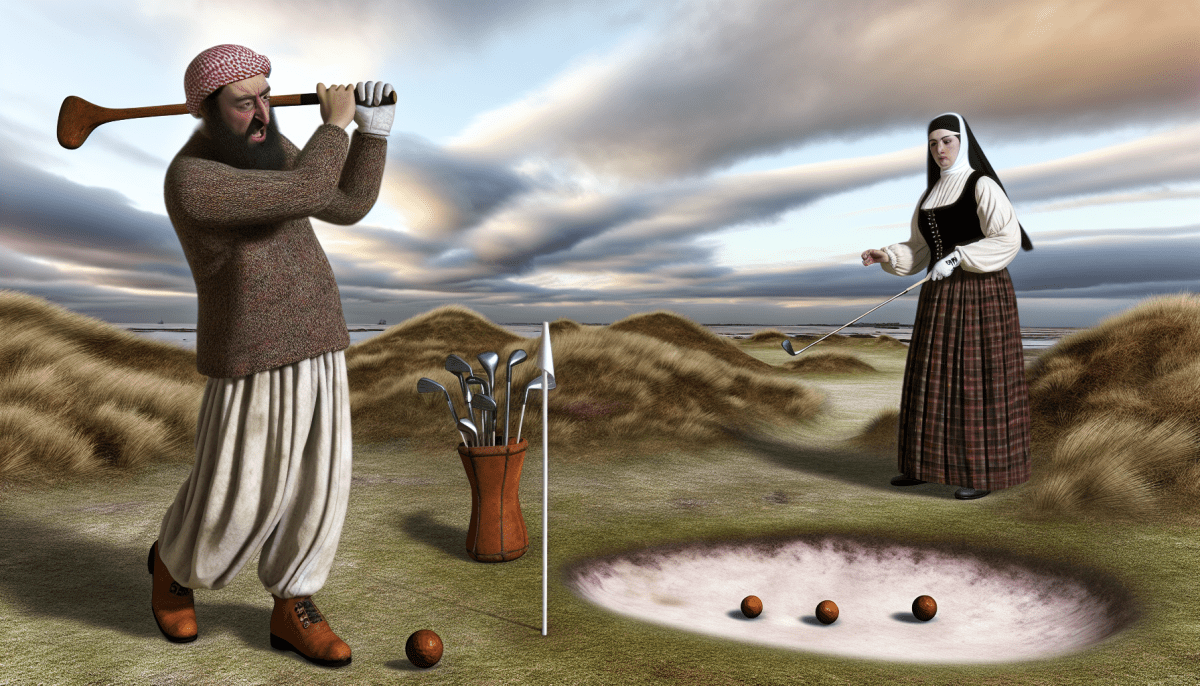Golf traces its roots back to Scotland in the 15th century, making it a sport rich in history. Some say it originated on the eastern coast, particularly in the windy town of St Andrews. It’s believed that locals played a game involving hitting a small ball with a club, possibly on the beaches or grassy areas.
As the sport began to take shape, it quickly gained popularity among the Scottish nobility. By the late 1400s, records show that King James II of Scotland actually banned golf because it distracted his knights from practicing archery. This ban reflects how crucial archery was for national defense, but it also highlights that golf had firmly taken hold as a pastime.
The official rules of golf started to be established around the early 18th century, which helped standardize how the game was played. The Old Course at St Andrews, one of the oldest golf courses in the world, became a central hub for golfers, helping to spread enthusiasm for the game beyond Scotland. This laid the groundwork for what would become an international sport enjoyed by millions today.
In 1754, the formation of the Society of St Andrews Golfers marked a major milestone. This group not only wrote down the first official rules but also organized the first known golf competition. This event helped to showcase golf as a formal sport, paving the way for clubs and associations that would follow across the globe.
The Rise of Golf in the 18th Century
Golf began to take shape in the 18th century, transitioning from its early days of making a messy game out of hitting a ball with sticks on the fields of Scotland. By this time, it was no longer just a casual pastime; it was becoming a structured sport with its own set of rules and etiquette. The game was played on rough terrain, but with the growing popularity, more established courses started to emerge.
One key development was the formation of the first official golf club in 1744—the Edinburgh Golf Club. This club laid down rules and regulations that helped standardize the game. Players could finally enjoy a more predictable experience, knowing what to expect on the green. The idea of a 'golf course' as we know it started to evolve during this time, moving away from random pastures to dedicated areas designed just for golf.
As the sport grew, so did the desire for more formal competitions. The first recorded competition, the Open Championship, took place in 1860 at Prestwick Golf Club. This event marked the beginning of professional golf, attracting both local players and enthusiasts willing to travel. With this shift, more players could showcase their talent, and it wasn't long before golf became popular beyond Scotland.
The 18th century also saw golf influencing culture and society. It was no longer just a sport for the elite; as it spread, more people were drawn to it, creating a community of golfers from various backgrounds. People started to recognize the social aspects of golf too, with groups gathering not just to play but to enjoy each other's company on the course, strengthening friendships and creating lasting bonds.
Golf's Global Expansion in the 19th Century
The 19th century was a pivotal time for golf, marking its transition from a regional pastime in Scotland to a beloved sport enjoyed around the globe. The game's roots in Scotland laid the foundation, but it was the dedicated efforts of enthusiasts and golfers that brought it to wider audiences. As the century progressed, golf clubs began popping up in various countries, creating an international community of players.
One of the significant catalysts for golf's spread was the British Empire. As the British expanded their influence worldwide, they took their love for golf with them. For instance, golf courses emerged in places like India and Australia, where British expatriates established clubs to enjoy their favorite sport far from home. These early courses often mirrored the ones back in Scotland, incorporating the classic links style that define traditional golf.
The establishment of golf as a formal sport was also critical. In 1860, the first Open Championship was held at Prestwick Golf Club in Scotland, drawing attention and excitement. By drawing skilled players, this event helped to elevate golf's status and showcased the game's competitive nature. Soon after, golf tournaments sprouted across Europe and North America, further fueling interest.
Alongside the growth of clubs and tournaments, technology began to influence the game. The introduction of the rubber-core golf ball in the mid-1800s improved performance, making the game more enjoyable and accessible. With new equipment, more people were encouraged to pick up clubs and join the fun. At this time, golf wasn’t just a game; it began evolving into a social event, bringing communities together through camaraderie and competition.
Modern Innovations Shaping Today's Golf Experience
Golf has come a long way from the grassy links of old. Today, technology is reshaping how we play, train, and connect with the game. Think about it: everything from high-tech equipment to smart tracking devices is enhancing our experience on the course.
Take golf clubs, for instance. Modern materials like carbon fiber and advanced alloys make clubs lighter and more durable. Enhanced designs optimize swing dynamics, giving players better control and distance. Whether you’re a seasoned pro or a weekend warrior, these innovations can seriously up your game.
Then there’s the rise of golf simulators. These machines let you play on famous courses without ever leaving your living room! They use sensors to track your swing, providing instant feedback and allowing you to practice at your own pace. It's perfect for those rainy days or for fitting in a quick round after work.
Don’t forget about apps and wearables. Many golfers now use GPS devices or mobile apps that help with yardage, shot tracking, and even course management. With data analytics at your fingertips, you can analyze your game like never before, helping you to identify strengths and areas for improvement.
All these innovations are making golf more accessible and enjoyable. Whether you’re looking to enhance your skills or simply have fun, there’s a whole world of modern technology ready to support your journey on the green.



